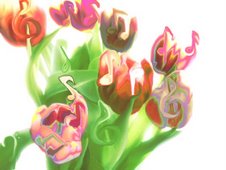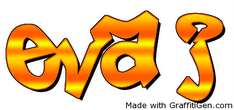Project Description: in this project students will set text to student composed, original music. The text that the students set is up to the teacher. The text could be student generated, or a piece of poetry studied in class.
Materials: For this project you could use GarageBand or Audacity software to set text or poetry to music. GarageBand is available on Apple computers, and Audacity can be downloaded for free from the internet. MIDI keyboards are optional. GarageBand comes free with a Mac. Audacity works with both Macs and PCs.Download Audacity
Setting The Text to Music
The text can either be student generated or selected from a work studied in class. Text generated using Song Form (with alternating verses and chorus), Narratives, and Poetry work well. When setting text some musical decisions will have to be made. Here are some considerations:
1. Mood: The mood of the text will influence which type of musical sounds accompany it.
2. Tempo: The speed of the music is also influenced by the mood. Setting a tempo at the beginning of the song is important in the recording process.
3. Form of the Text: The form of the text will influence the form of the music. The text usually should be finished before trying to write the music to it. The approach to creating music will depend upon whether the text is in song form, narrative, etc.
Standards
Standards
This workshop addresses the New York City Department of Education content areas of Music and English Language Arts. It addresses English Language Arts Standards E5 for Literature, and E4 regarding Conventions, Grammar, and Usage of the English Language. The standards from the Blueprint for Music are from the Making Music Strand. More information regarding these standards can be found here.
GarageBand Tips
GarageBand Tips
1. Tempo: Set your tempo first by adjusting the slider next to the blue display in the center of the window. The tempo should reflect the speed of the spoken text. All music from the loop browser will adjust to the tempo that you initially set.
2. Loop Browser: the eyeball button at the bottom left is an excellent resource for finding prerecroded sounds to accompany text. Just click and drag the sound recordings up to the gray arrange area and place them where needed.
3. Recording Text: Click the + button on the bottom left. Select “Real Instrument”. Choose any effects that you wish to apply. Click the round red button to record.
4. Software Instruments vs. Real Instruments: Green tracks (on the left that store the regions) and regions (small recordings) are for software instruments. Software instruments use MIDI technology, and are computer generated. They do not mix with the blue Real Instruments, which are acoustic recordings.
5. Musical Typing: If you want to create your own regions without the loop browser, musical typing works well if you do not have a MIDI keyboard. Simply select “Window”, and “Musical Typing”. Next select the + at the bottom left, and select “Software Instrument”. You can choose any type of instrument that you want from the options on the right side.Your alpha numeric keyboard will work as a MIDI piano controller.
6. Sharing Digitally: To export your work after saving it, select “Share”, and “Send to iTunes”. From iTunes you can convert it to an MP3 file (using the advanced menu), and then share it via email, or iPod. You can also burn a CD from iTunes.
Audacity Tips
Audacity works with both Macs and PCs. It works in a similar way to GarageBand, but it does not have a loop browser. This can be overcome by searching on the internet for royalty-free sound samples. You can download sound samples to your computer, and then select “Project” and “Import Audio”. One bonus of the Audacity program is that it has fun effects. To use them highlight the recording you want processed, and choose and effect from the menu labeled “Effects”. When you are finished select “File” and “Export as MP3” to create an MP3 file that can be used in a podcast, iPod, or emailed. Selecting "File" and "Export as WAV" will produce a higher quality recording that can be burned onto an audio CD.
Audacity Tips
Audacity works with both Macs and PCs. It works in a similar way to GarageBand, but it does not have a loop browser. This can be overcome by searching on the internet for royalty-free sound samples. You can download sound samples to your computer, and then select “Project” and “Import Audio”. One bonus of the Audacity program is that it has fun effects. To use them highlight the recording you want processed, and choose and effect from the menu labeled “Effects”. When you are finished select “File” and “Export as MP3” to create an MP3 file that can be used in a podcast, iPod, or emailed. Selecting "File" and "Export as WAV" will produce a higher quality recording that can be burned onto an audio CD.


No comments:
Post a Comment